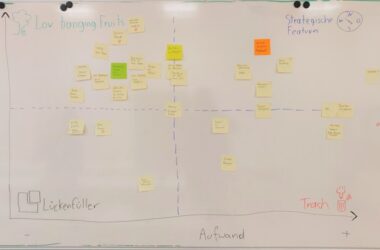IT Staff Augmentation: A Comprehensive Guide Businesses and their technological requirements are always changing in the fast-paced digital world of today. IT staff augmentation has grown in popularity as a way for businesses to cover staffing shortages without making the long-term commitment of full-time hires. It basically involves hiring outside talent to assist your current team, whether it be for a particular project, to fill a skills gap, or to handle increasingly demanding tasks. This strategy enables businesses to stay flexible & adaptable to shifting needs.
Key Takeaways
- IT staff augmentation can help fill in skill gaps, meet project deadlines, and reduce costs.
- Assess current IT staffing resources and identify areas where additional support is needed.
- Set clear budgetary goals and objectives to ensure that IT staff augmentation aligns with overall business objectives.
- Explore different IT staff augmentation options such as outsourcing, freelancers, or hiring temporary staff.
- Evaluate the cost-effectiveness of different IT staff augmentation strategies to make informed decisions.
Also, new tools and technologies are constantly emerging, changing the tech landscape. Occasionally, your internal team may lack the knowledge required for a specific project or technology. You can access specialized skills that your present team might not have by adding more employees.
This guarantees that your company maintains its competitiveness in the market in addition to assisting with project completion more quickly. Prior to implementing staff augmentation, it is essential to take stock of your current IT staffing situation. To begin, examine the strengths and weaknesses of your current team.
What skills do they have? Do they need to fill any gaps? This assessment will help you pinpoint the precise areas where you may require more assistance. For example, you’ll know exactly what kind of expertise to seek if your team is very good at software development but has trouble with cybersecurity.
Take into account the workload that your team is currently managing as well. Do they have too many projects? Are deadlines being missed? Learning about the demands on your team will help you determine how many more resources you may require. Asking for feedback from your team members is also beneficial because they can offer insightful information about areas where they feel overburdened or in need of assistance.
Having a clear budget for your IT staff augmentation efforts is the next step after determining your staffing needs. This is figuring out how much you want to spend and what you want to get out of the investment. Whether your goal is to improve your team’s performance in a certain area or finish a project on schedule, having specific goals will help you stay focused and guide your decision-making process.
It may be tempting to choose the least expensive option, but it’s important to balance the costs and possible return on investment (ROI). Investing a little more in highly qualified experts can occasionally result in better results over time. Therefore, take the time to clearly define your financial objectives and make sure they complement your overarching business goals. There are various options for augmenting IT staff, & each has pros and cons of its own. Hiring independent contractors or freelancers for brief projects is one popular strategy.
With this flexible approach, you can hire talent as needed without having to commit to a long-term job. But sometimes it can be difficult to manage freelancers, particularly when it comes to guaranteeing consistency and quality. Collaborating with an IT staffing company is an additional choice. These organizations focus on matching companies with knowledgeable individuals who possess the abilities you require. By doing a lot of the legwork for you, the agency will save you time & effort during the hiring process. Nonetheless, it’s critical to pick an agency that is knowledgeable about your sector and can offer applicants who mesh well with your business culture.
It’s critical to assess each IT staff augmentation option’s cost-effectiveness as you investigate them. This entails considering more than just possible hires’ hourly rates or salaries. Take into account elements such as training duration, onboarding expenses, and the possible influence on project schedules. For instance, a highly skilled contractor may have higher initial costs, but over time, their ability to get started quickly could save you money and time.
Consider the ways in which various tactics complement your company’s objectives. It may be less expensive to hire freelancers rather than go through the drawn-out hiring process for full-time staff if you need results on a particular project quickly.
You can choose the tactics that will yield the greatest return on investment for your company by carefully considering these variables.
The next step is to budget & assign resources in accordance with your chosen strategy for IT staff augmentation. This entails budgeting for hiring as well as other associated costs like onboarding & training new employees. Don’t forget to factor in any equipment or software that these new hires might require in order to do their jobs well. It’s a good idea to have a backup plan in case the augmentation process involves unforeseen expenses.
With a financial buffer, for example, you can make sure that your projects stay on course without going over budget if they take longer than expected or if you need more resources halfway through. It takes constant observation and modification as conditions change; budgeting is not a one-time event. As you hire additional employees, monitor their performance and how well they fit in with your current team. If things aren’t working out as you had hoped, don’t be afraid to make changes. You might need to reallocate funds or even change your strategy. Getting regular feedback from your augmented staff on how well they’re integrating into the team and whether they have the tools they need to succeed can also be very beneficial.
This proactive strategy can assist you in spotting any problems early on and making the required adjustments before they worsen. Measuring the return on investment (ROI) of your IT staff augmentation efforts is crucial. In order to determine whether your investment has been profitable, you must examine both quantitative & qualitative metrics. When looking at quantitative aspects, take into account things like project completion times, cost savings from improved productivity, and overall gains in productivity. Get qualitative input regarding your current team’s & the augmented staff’s experiences collaborating.
Gaining insight into these dynamics can help you determine how well your augmentation strategy is performing and where it might be improved. Are they working together effectively? Do they feel supported?
Finally, in today’s tech-driven business environment, firms seeking to improve their capabilities & maintain their competitiveness may find that hiring more IT staff can be a very effective strategy. Making well-informed decisions that propel your company to success requires knowing your needs, establishing specific objectives, considering all of your options, and keeping a close eye on your investments.
Budgeting Strategies for Implementing IT Staff Augmentation is crucial for any organization looking to scale their development team efficiently. One related article that complements this topic is








